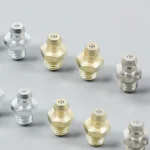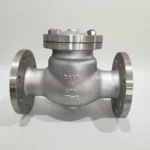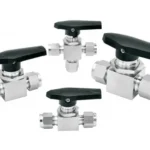The challenge of selecting a material is actually to verify that the chosen material is the most suitable for the application. This involves taking into account working conditions and flow medium characteristics.
The most important thing about working conditions is to understand the pressure and temperature ratings for working media and consider the corrosive and corrosive. In addition, thermal and physical shock, line stress, and fire hazard may need to be considered.
In general, engineers who specify material selection should be familiar with ASME B16.34 specifications. The standard covers, among other topics, pressure-temperature ratings, dimensions, materials, and other requirements for valve design, manufacture, and testing. ASME code is generally accepted worldwide (for example, USA, Canada, Australia), but different standards cover this subject and rule design and material selection. For example, the European standard series EN 12516 covers valve material selection.
Before selecting materials for valves, it is essential to be aware of this specification. If it is not mandatory (and in some cases required), the materials presented in this standard for valves are derived from real-life experience. Therefore, it is tested and proved to be suitable for the actual service in the specific service.
In general, when considering the temperature limits of different groups of materials, Table 1. It should be used as a general reference for material selection.
In some cases, a compromise must be reached in selecting the material. Some conditions require the use of special alloys and metals to withstand the specific corrosion properties of flowing fluids. These materials are much more expensive than ordinary metals, so the economy may also factor in material selection. Table 2 shows the ASTM materials used extensively for body and bonnet applications.
However, most valve applications handle relatively non-corrosive fluids at pressures and temperatures that do not require particular material. For this reason, cast carbon steel is the most commonly used body material and provides satisfactory service at a much lower cost than unique alloy materials.
Carbon steels commonly used for valve bodies are WC Steel (Wrought Carbon), ASTM A216/A216M, and A105 as forged versions of this steel, class WCA, WCB, and WCC.
Among the three steel grades, WCB is the most commonly used steel grade for applying cast steel valves at room temperature. Astm-a216 WCB AT-20 Times F to 800? F temperature range is acceptable where corrosion resistance is not essential. Essential is also widely used in air, saturated or superheated steam, non-corrosive liquids, and gases, a medium operating conditions of the body of steel materials. WCC is not used above 800 ° F because the carbon-rich phase may be converted to graphite. No heat treatment is required unless the nominal thickness exceeds 1-1/4 inch.
In addition to carbon steel for valve bodies, there are a variety of materials. Let us mention some of the most widely used ASME B16.34 materials:
– cast iron (ASTM A126) for valve body control of inexpensive, non-ductile materials, steam, water, gases, and non-corrosive fluids. It is used for relatively low temperature and pressure grades.
– cast cr-mo steel (ASTM A217 Grade C 5) ! In the past, it was usually used for chromium-molybdenum steel applications. However, some of this material is difficult to cast and tends to c welded. WC9 has successfully replaced C5 in many applications, but C5 continues to be used in refinery applications. Its high chromium content provides better resistance to high-temperature high-temperature
– cast chromium-molybdenum steel (ASTM A217 WC9 class) has excellent casting and welding properties. WC9 has successfully replaced C5 in most applications, mainly steam and boiler feed services. Chromium and molybdenum provide corrosion and creep resistance, making them suitable for 1100? F. . .9 requires pre-welding and post-welding heat treatment.
– cast 304L stainless steel (ASTM A351 CF3 class) is a quality material for chemical service valves. 304L is the best material for nitric acid aspecificicicic chemical service applications. The best corrosion resistance is maintained even in the welded condition.
– cast 316 stainless steel (ASTM A351 CF8M class) as industry stanindustry-standard eel body material. Compared with 304, Mo addition makes 316 more resistant to corrosion, pitting, creep, and oxidizing g fluids. It has the broadest temp most comprehensive range of any standard material:-425 OC to 1500 OC. Rough castings are heat treated to provide maximum corrosion resistance.
The trim usually includes a disc, seat, stem, and sleeve required to guide the branch. Valve internals related to temperature limits shall be selected in Table 3.




